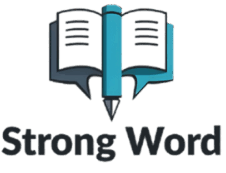There are many factors to consider when deciding which dyslexia reading programs are best for your child. First, you should determine the type of dyslexia you have. You can do this by taking an online screening test or a comprehensive assessment. A thorough assessment will provide important information on your child’s strengths and weaknesses and determine which type of literacy program will be best for your child. However, it would help if you remembered that there are also many benefits to working with a professional.
Orton Gillingham
The main differences between Orton Gillingham dyslexia reading programs and non-Orton Gillingham methods can be found in their methods and price. The former has been used for many years and is a well-known, tried-and-true program. The latter, based on a theory of cognition, focuses on the process of learning. While these methods may have disadvantages, the former is more effective for children with specific learning needs.
The Orton-Gillingham approach to learning to read was developed in the 1950s by Dr. Samuel Orton and his colleague Anna Gillingham. The approach is sequential, multisensory, and phonics-based and is largely aimed at teaching reading, spelling, and writing skills to children with dyslexia. It was originally developed in small special education classes and is still highly effective today. The method is often referred to as Structured Literacy.
Wilson Fundations
The Wilson Program was developed by Barbara and Edward W. Wilson in 1985. While similar to OG, it emphasizes a tiered system and a direct approach to teaching literacy. This program is a well-known choice because it focuses on the sound-letter relationship rather than OG’s “scaffolded texts.” However, despite its popularity, it is not scientifically proven to help students with dyslexia.
Wilson has three different reading programs. The Wilson Reading Program
for grades kindergarten through third grade uses a multisensory approach, while the Wilson Fluency/Basic program is designed for grades fourth through eighth. The Fundations method focuses on helping younger children with dyslexia develop strong word recognition skills through direct feedback. While the Just Words program is best suited for students with dyslexia, it is also designed for adults with low-level reading disabilities.
Lindamood-Bell
The Lindamood-Bell reading program has been designed for children with varying degrees of dyslexia. The program combines cognitive and sensory learning to help people with dyslexia learn to read and spell. As part of its research, the Lindamood-Bell Learning Centers have partnered with many universities to test the program’s effects on the brain. The programs are designed for both educators and parents.
The programs are not widely used in public schools and are generally provided at private Lindamood-Bell Learning Centers. This method is expensive and generally reserved for students who have a severe learning disability. These programs are highly structured and are based on the Orton-Gillingham principles. These programs typically focus on developing alternative methods of perceiving phonemes. They are also flexible enough to be used in small groups.






